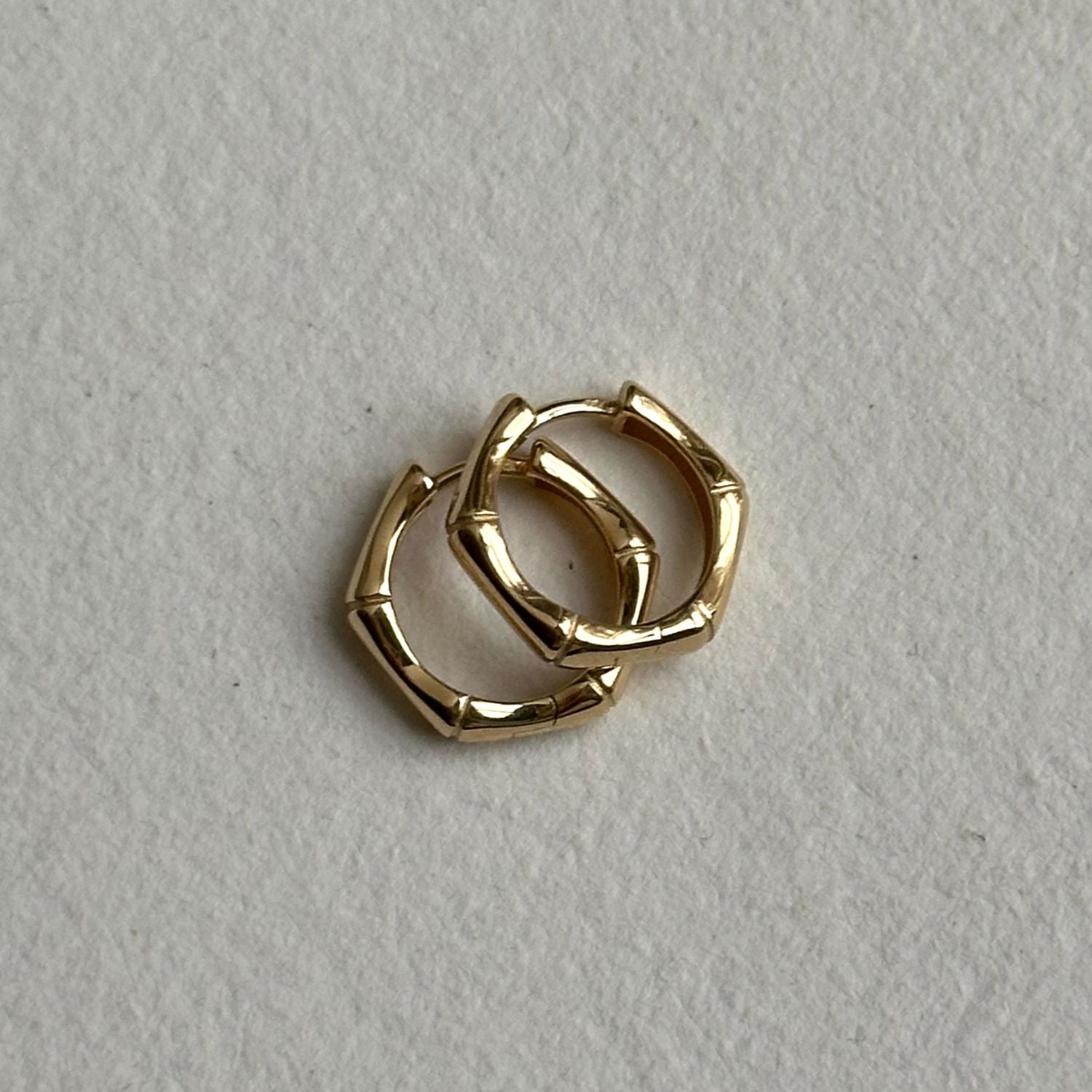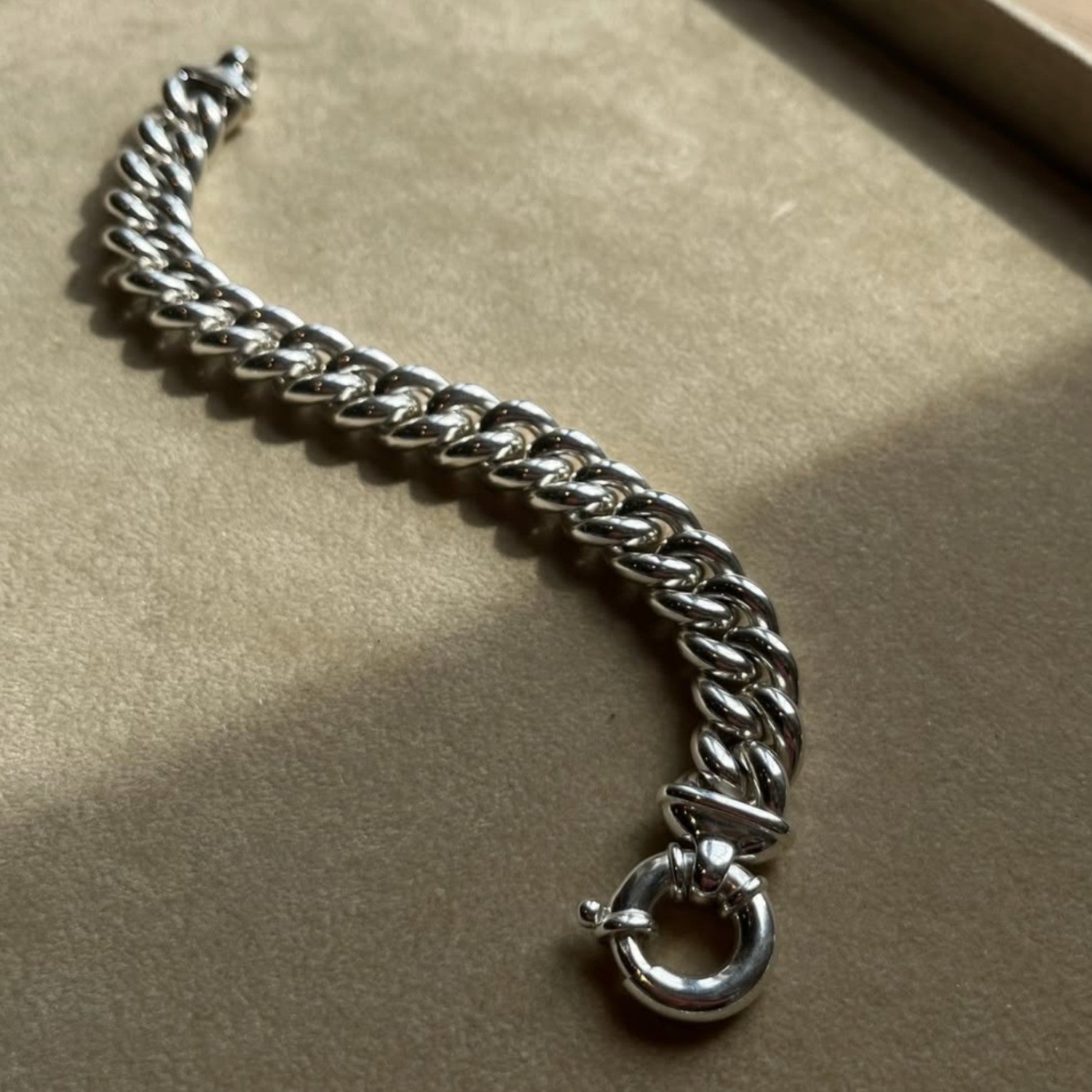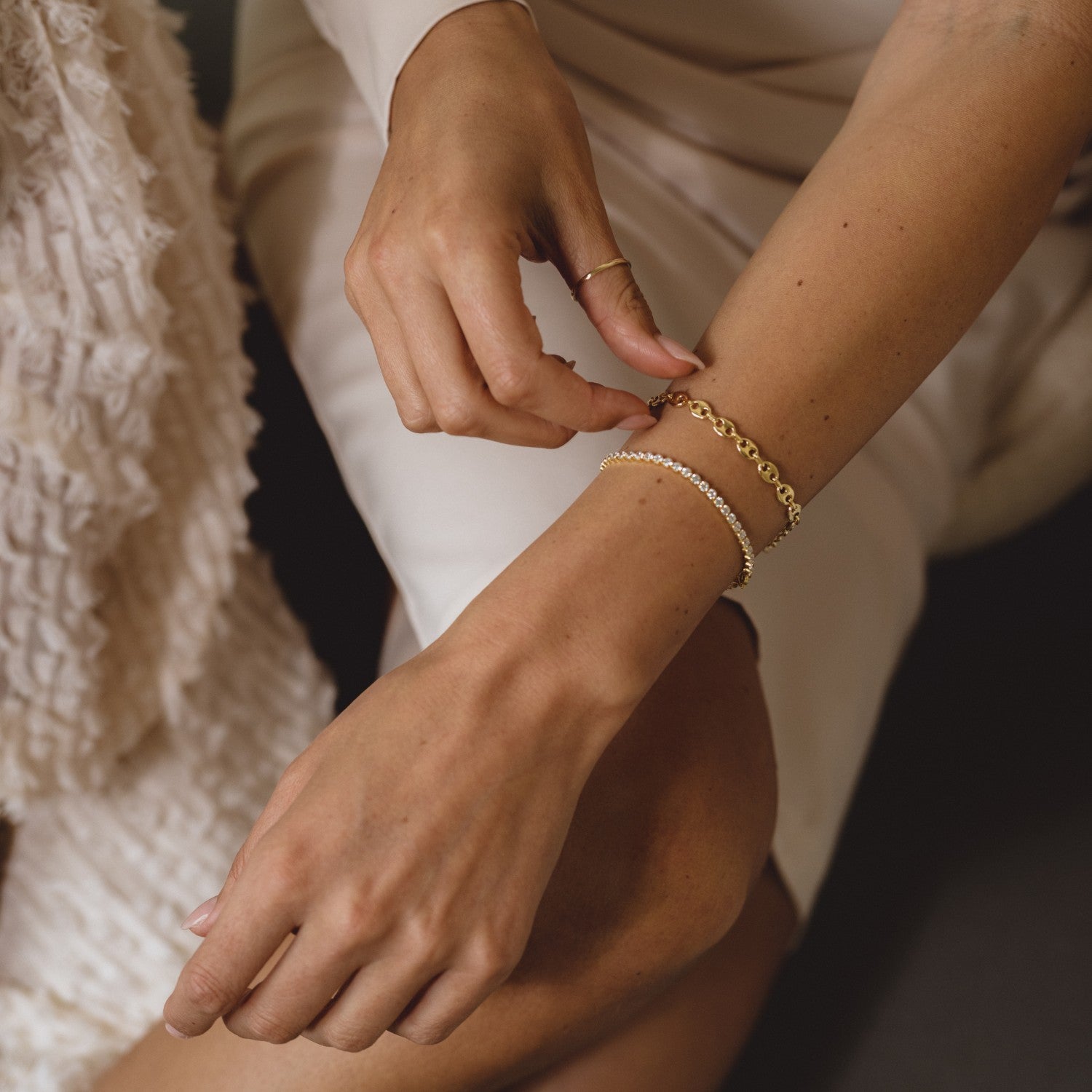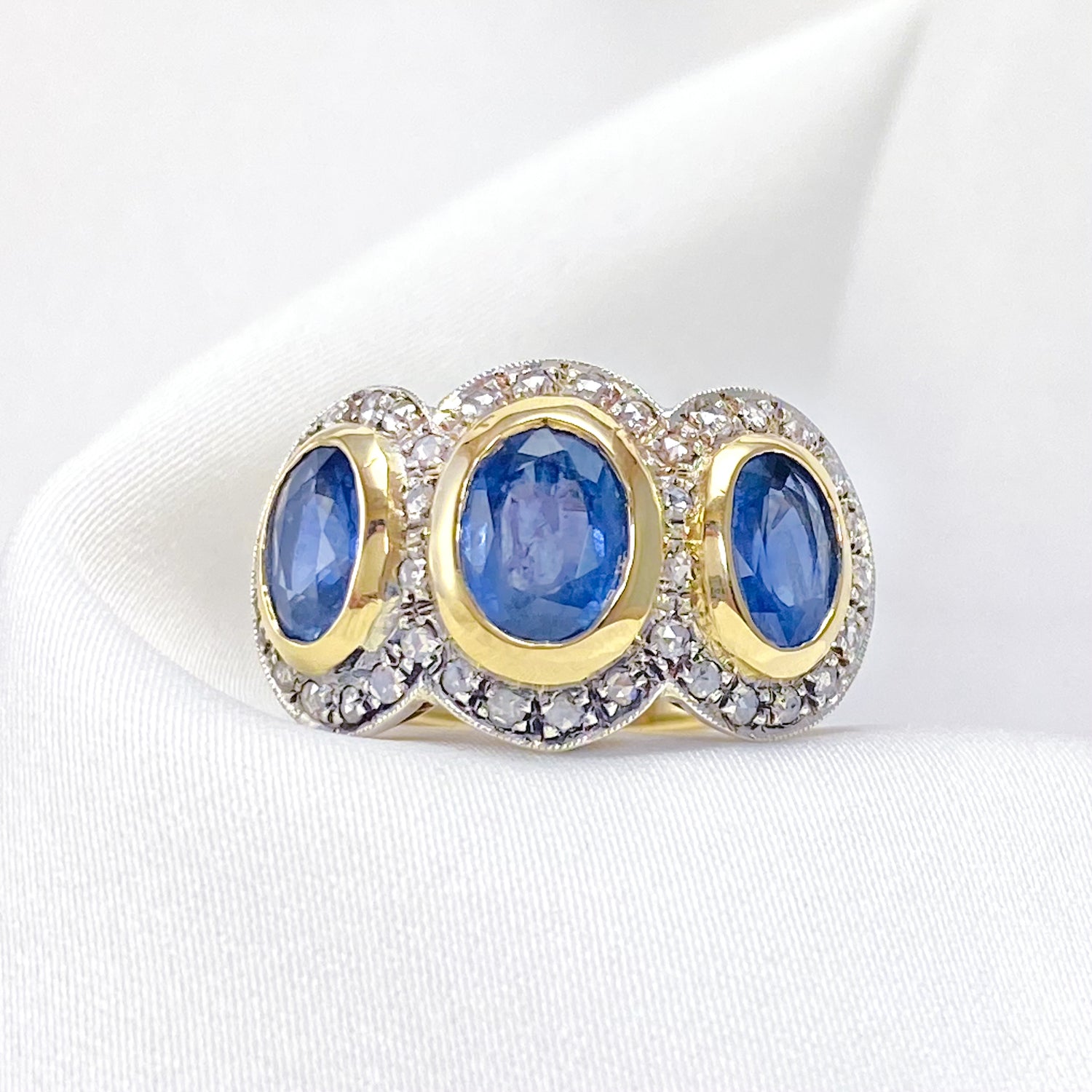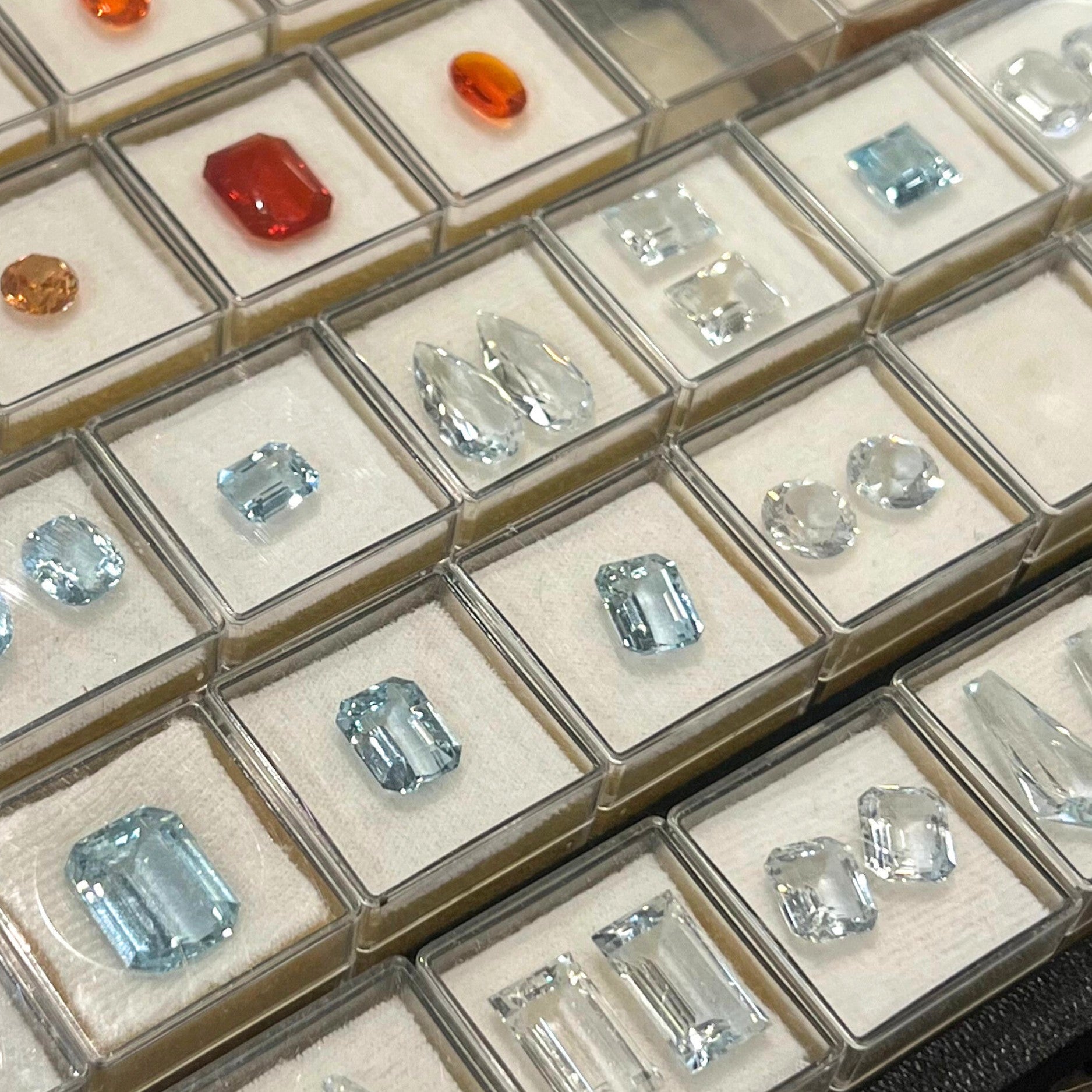Lab grown diamonds are becoming increasingly popular in rings, bracelets, and necklaces, but also in earrings and charms. But what are lab grown diamonds exactly? And why would you choose a lab grown diamond? In this article, you will learn more about their origin, value, and the choice for these diamonds.
What is a lab grown diamond?
Lab grown diamonds are real diamonds created in a laboratory. Sometimes, these diamonds are also called synthetic diamonds. We prefer using the term lab grown as synthetic is often confused with other synthetic stones or crystals such as zirconia, which are not real diamonds.
Lab grown diamonds have the exact same chemical composition as natural diamonds, making them genuine diamonds. Visually, there is no difference between both diamonds. The popularity of lab grown diamonds has been increasing in recent years, and used more frequently in jewelry, like in our Oro Diamond Row Ring.
What is the difference between lab grown and natural diamonds?
The difference in lab grown and natural diamonds lies in their origin. Lab grown diamonds are artificially created in a laboratory, while natural diamonds are mined. Lab grown diamonds often serve as an ethical and sustainable alternative to natural diamonds. They are generally better for the environment, as they are created under controlled conditions causing lower CO2 emissions. The production process of lab grown diamonds is more transparent. Another difference is in the price; lab grown diamonds are generally about 30% lower in price, making jewelry with these diamonds more affordable than with natural diamonds.
For these reasons, lab grown diamonds are becoming more prevalent in jewelry. However, natural diamonds remain a popular and valuable choice due to their beauty originating directly from nature and the potential age of billions of years. All diamonds used at Oro Jewels are certified, ensuring ethical sourcing.
How to identify a lab grown diamond?
Identifying lab grown diamonds can be challenging since they have the same composition as natural diamonds. Some lab grown diamonds may have an inscription indicating their origin. When you examine the diamond with a regular diamond tester (a tool that reads the hardness of a diamond), there will be no noticeable difference. However, there are more sensitive testers that can suggest the difference between a naturally formed and lab grown diamond. You can also check the certification to find out the type of diamond. Lastly, price can be a factor to find out if a jewel contains a lab grown diamond. A jewel with natural diamonds usually has a higher price than the same piece with lab grown diamonds.
How are lab grown diamonds being made?
Lab grown diamonds, as the name suggests, are created in a laboratory under controlled conditions. A lab grown diamond has the same chemical composition, properties, and structure as a natural diamond; it is just created through an accelerated process. The natural growth process is replicated in the laboratory.
This can be achieved through two different techniques: the HTHP or CVD process. HTHP stands for High Temperature High Pressure, where the diamond is created through high temperatures and high pressure. CVD stands for Chemical Vapor Deposition, where diamonds are developed through a chemical reaction involving various substances.
After the diamond is created in the lab, it undergoes careful inspection and quality control. The rough diamond is then cut into the desired shape. The lab grown diamonds are subsequently certified by a certification authority, ensuring that you are purchasing a genuine, high-quality diamond.
Buying lab grown diamonds
At Oro Jewels, we sell jewels with either natural or lab grown diamonds. For example, our Tennis Bracelet features lab grown diamonds. In our Diamond Signet Ring, you will find lab grown diamonds in a pavé setting, enhancing their brilliance. If you need help in finding a sustainable piece with diamonds, feel free to contact us. We are happy to help you.

